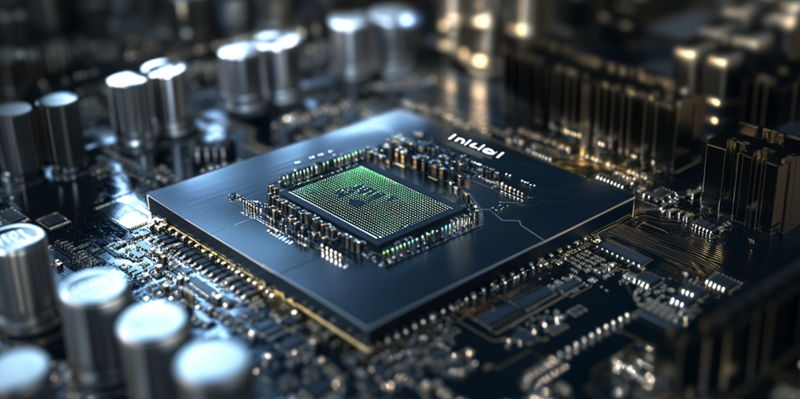Intel’s recent announcement regarding its Lunar Lake CPUs, which includes on-package memory technology similar to Apple’s M-series chips, has generated considerable interest within the tech industry. During the company’s third-quarter earnings call, CEO Pat Gelsinger highlighted the unique nature of Lunar Lake’s embedded memory design, noting its significant impact on gross margins. This revelation has cast a spotlight on Intel’s evolving approach to CPU development and its broader strategic goals.
Intel’s Repositioning of Lunar Lake CPUs
Reimagining Lunar Lake as an "AI PC" Chip
Initially, Intel envisioned the Lunar Lake as a niche product focused on offering excellent battery life. The chips were intended to be manufactured by TSMC, leveraging the foundry’s advanced fabrication technologies. However, as the project progressed, Lunar Lake underwent a significant rebranding. Intel shifted its focus, positioning Lunar Lake as an "AI PC" chip aimed at harnessing the growing demand for artificial intelligence capabilities in consumer devices. This pivot, while ambitious, led to unforeseen consequences.
The rebranding effort resulted in unexpectedly high production volumes for the Lunar Lake chips. While the initial vision was to produce a limited number of units, the demand driven by the new AI-centric positioning quickly outpaced expectations. This surge in production volumes had a direct and detrimental effect on Intel’s gross margins. Embedded memory, a core feature of Lunar Lake, introduced additional costs that were not initially accounted for in the original financial projections. As a result, Intel’s profitability took a hit, forcing the company to reassess its strategy for future CPU developments.
Financial Implications and Decision to Move Away from Embedded Memory
Intel’s CFO underscored the financial strain imposed by the embedded memory in Lunar Lake CPUs during the earnings call. The additional costs associated with high-volume embedded memory pass-through significantly eroded the company’s gross margins. Furthermore, CEO Pat Gelsinger echoed these sentiments, emphasizing that such high-volume memory should not pass through the expensive production channel utilized for Lunar Lake. This realization has pivotal implications for Intel’s future CPU designs.
Looking ahead, Intel made the strategic decision to avoid incorporating embedded memory designs in future products. Instead, the company plans to return to traditional designs with off-package memory, which is more cost-effective and aligns better with their profitability goals. This shift will be evident in upcoming CPUs, including Panther Lake and Nova Lake, which will eschew the on-package memory approach in favor of more financially viable alternatives. Intel’s commitment to improving margins and streamlining product development processes is clear, as they aim to enhance their competitive position in the rapidly evolving tech landscape.
Intel’s Forward Strategy and Future CPU Developments
Emphasis on In-House Fabrication and Intel Foundry Services
Intel’s forward strategy hinges on a return to in-house fabrication, bolstered by Intel Foundry Services. This approach is expected to mitigate the financial challenges posed by relying on external foundries, such as TSMC. As part of this strategic pivot, Intel is focusing on the development of its 18A process, slated for release in 2025. CPUs based on this advanced node, including Panther Lake and Nova Lake, will benefit from the company’s renewed emphasis on internal manufacturing.
In addition to the 18A process, Intel has outlined plans for a subsequent 14A process, earmarked for 2026. By leveraging these advanced fabrication technologies, Intel aims to enhance its competitive advantage in the CPU market. The shift away from TSMC’s fabs is anticipated to yield significant cost savings, thereby improving gross margins and overall financial performance. This strategic move underscores Intel’s commitment to leveraging its own manufacturing capabilities to drive innovation while maintaining a keen focus on profitability.
The Broader Implications for Intel’s CPU Product Lineup
Intel’s recent announcement about its upcoming Lunar Lake CPUs has sparked significant interest in the tech community. Similar to Apple’s M-series chips, these new processors will feature on-package memory technology. During Intel’s third-quarter earnings call, CEO Pat Gelsinger underscored the innovative nature of Lunar Lake’s embedded memory design and its positive impact on gross margins. This development is pivotal for Intel as it highlights the company’s commitment to advancing CPU technology and achieving its broader strategic objectives. The integration of on-package memory is expected to enhance performance, reduce latency, and improve energy efficiency. This shift not only signifies a major step forward for Intel in terms of technology but also demonstrates its competitive stance in the semiconductor industry. By incorporating these advanced features, Intel aims to regain its footing amid fierce competition and drive future growth. The Lunar Lake CPUs represent a crucial element in Intel’s roadmap, signaling a new era of innovation and market relevance.

